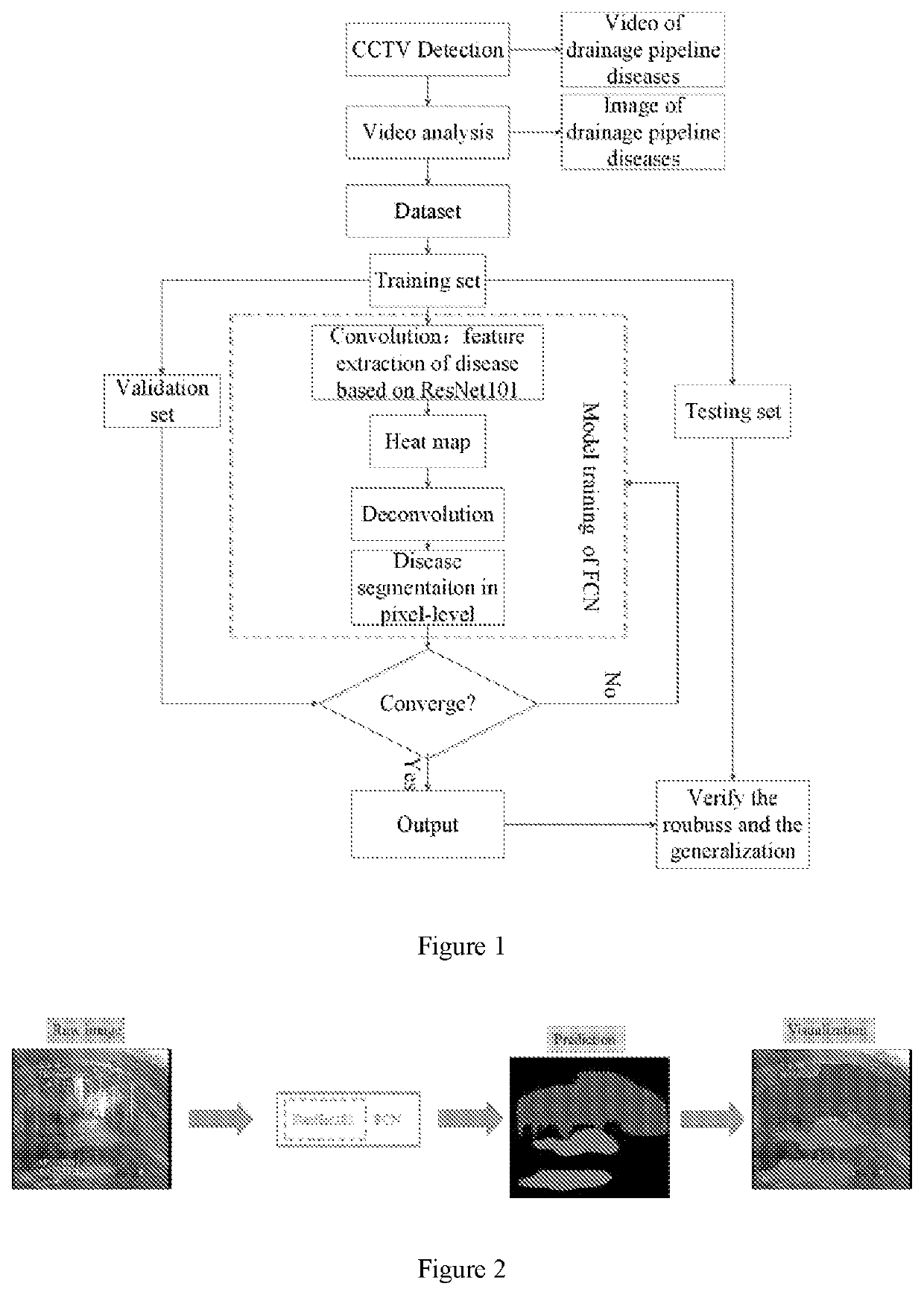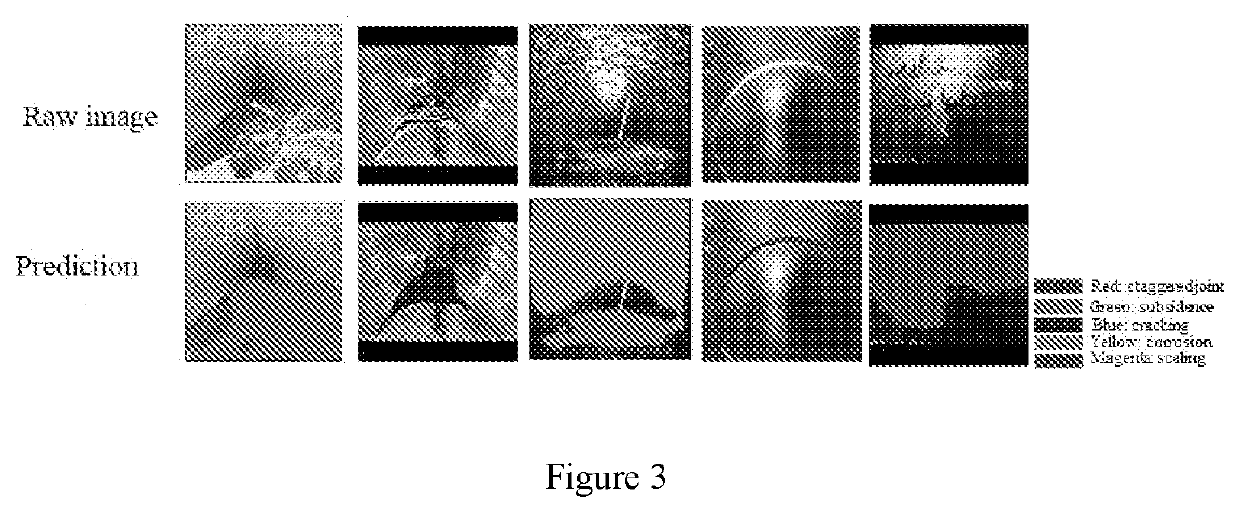Method for segmentation of underground drainage pipeline defects based on full convolutional neural network
a convolutional neural network and pipeline technology, applied in the field of deep learning and underground pipe gallery engineering, can solve the problems of serious affecting the daily life of residents, heavy casualties and economic losses, and the potential safety hazards of underground drainage pipeline aging and disrepair, and achieve the effects of improving the accuracy of pipeline defect detection, improving the utilization rate of defect features, and poor training accuracy of data samples
- Summary
- Abstract
- Description
- Claims
- Application Information
AI Technical Summary
Benefits of technology
Problems solved by technology
Method used
Image
Examples
Embodiment Construction
[0036]In order to facilitate the understanding, the present invention will be further described with reference to the relevant drawing. An embodiment of the present invention is shown in the drawing. However, the present invention can be implemented in many different forms and is not limited to the embodiment described herein. On the contrary, the purpose of the embodiment is to illustrate the present invention more clearly and comprehensively.
[0037]Unless otherwise defined, all technical and scientific terms used herein have the same meaning as commonly understood by those skilled in the art of the present invention. The terms used in the description of the present invention herein are only for the purpose of describing the embodiment, and are not intended to be limiting.
[0038]Referring to FIGURE, the present invention provides a method for segmentation of underground drainage pipeline defects based on a full convolutional neural network, comprising steps as follows.
[0039]S10: coll...
PUM
 Login to View More
Login to View More Abstract
Description
Claims
Application Information
 Login to View More
Login to View More - R&D
- Intellectual Property
- Life Sciences
- Materials
- Tech Scout
- Unparalleled Data Quality
- Higher Quality Content
- 60% Fewer Hallucinations
Browse by: Latest US Patents, China's latest patents, Technical Efficacy Thesaurus, Application Domain, Technology Topic, Popular Technical Reports.
© 2025 PatSnap. All rights reserved.Legal|Privacy policy|Modern Slavery Act Transparency Statement|Sitemap|About US| Contact US: help@patsnap.com


